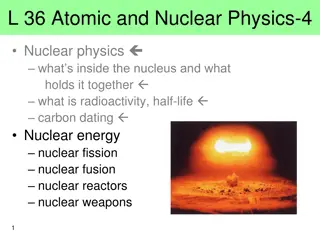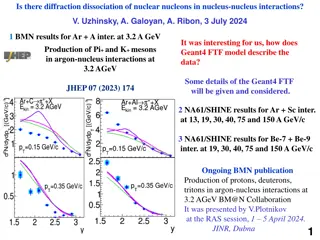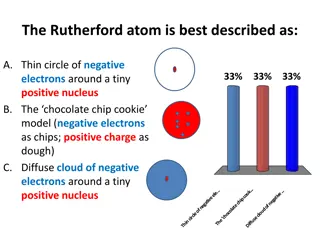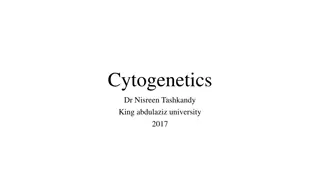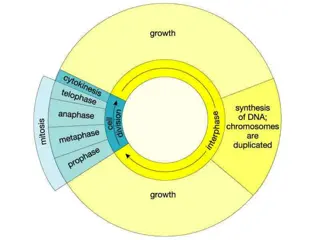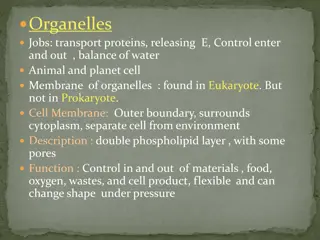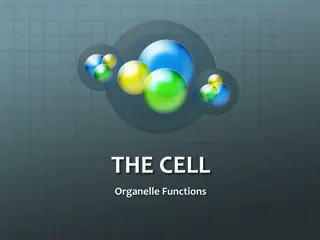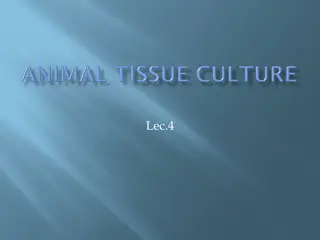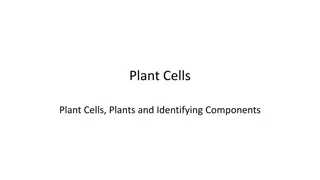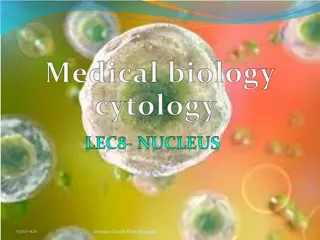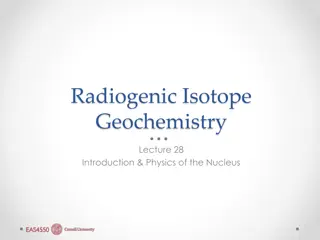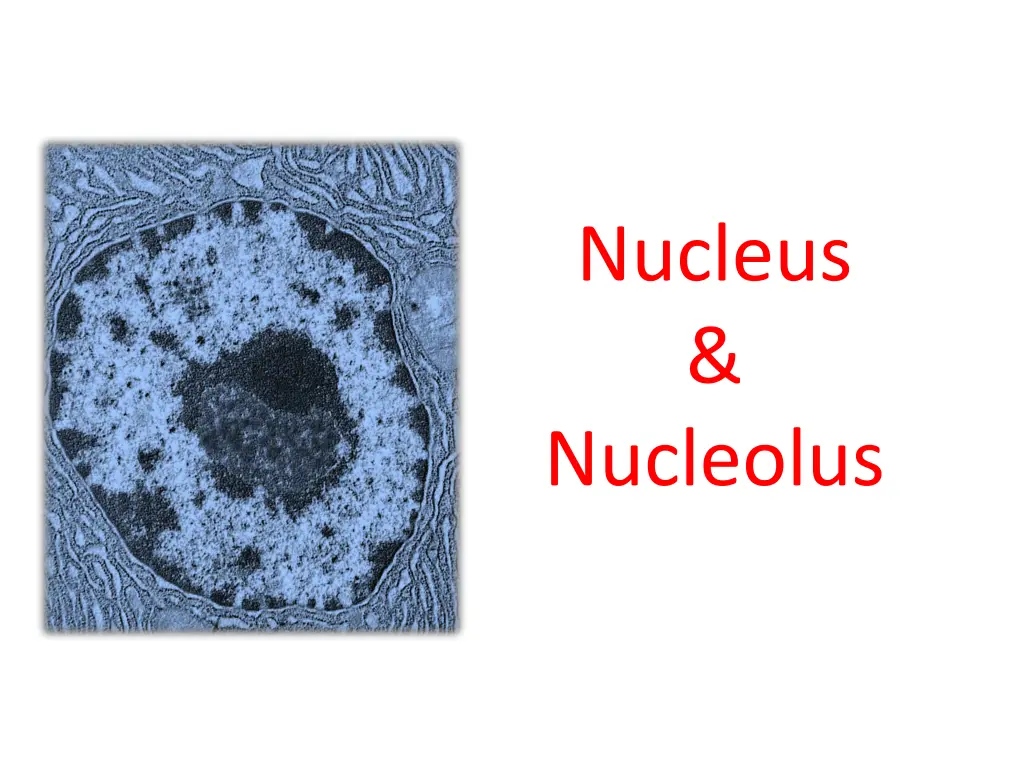
Understanding the Cell Nucleus and its Functions
"Explore the structure, history, and main characteristics of the cell nucleus, a vital organelle in eukaryotic cells. Learn about its role in storing DNA, coordinating cellular activities, and its significance in advanced organisms. Discover the unique features, shape variations, and ultrastructure of the nucleus. Dive into the intriguing world of this highly specialized organelle that serves as the information center of the cell."
Download Presentation

Please find below an Image/Link to download the presentation.
The content on the website is provided AS IS for your information and personal use only. It may not be sold, licensed, or shared on other websites without obtaining consent from the author. If you encounter any issues during the download, it is possible that the publisher has removed the file from their server.
You are allowed to download the files provided on this website for personal or commercial use, subject to the condition that they are used lawfully. All files are the property of their respective owners.
The content on the website is provided AS IS for your information and personal use only. It may not be sold, licensed, or shared on other websites without obtaining consent from the author.
E N D
Presentation Transcript
Nucleus & Nucleolus
History -Discovered in 1831 by Scottish botanist Robert Brown -Suggested the nucleus played a key role in fertilization and development of the embryo in plants -Name (nucleus) derived from the Latin word for kernel/nut Robert Brown 1773-1858
Main Characteristics Membrane-enclosed organelle found in eukaryotic cells Generally found in the central region of the cell (in animal cells) Roughly spherically shaped Largest and most easily seen organelle
Shape: Related to the shape of the cell Almost irregular shape Size: Almost varies 3-25 micron Depends on cell type ,function, set of chromosomes Mononucleate, binucleate, polynucleate, disc, spherical, oval, bilobed, multi lobed, pyriform, spindle, C Shaped, Twisted etc
The nucleus is a highly specialized organelle that serves as the information and administrative center of the cell. This organelle has two major functions. 1. It stores the cell's hereditary material, or DNA, and 2. it coordinates the cell's activities, which include intermediary metabolism, growth, protein synthesis, and reproduction (cell division).
Only the cells of advanced organisms, known as eukaryotes, have a nucleus. Generally there is only one nucleus per cell, but there are exceptions such as slime molds and the Siphonales group of algae. Simpler one-celled organisms (prokaryotes), like the bacteria and cyanobacteria, don't have a nucleus. In these organisms, all the cell's information and administrative functions are dispersed throughout the cytoplasm.
The spherical nucleus occupies about 10 percent of a cell's volume, making it the cell's most prominent feature. Most of the nuclear material consists of chromatin, the unstructured form of the cell's DNA that will organize to form chromosomes during mitosis or cell division. Also inside the nucleus is the nucleolus, an organelle that synthesizes protein-producing macromolecular assemblies called ribosome's.
Cell Nucleus: Structure The structure of a cell nucleus consists of . 1) 2) 3) 4) Nuclear membrane (Nuclear envelope), Nucleoplasm, Nucleolus and Chromosomes. Nucleoplasm, also known as karyoplasms, is the matrix present inside the nucleus. several parts of a cell nucleus.
Nuclear Membrane: A double-layered membrane, the nuclear envelope, separates contents of the nucleus from the cellular cytoplasm The nuclear membrane is a double-layered structure that encloses the contents of the nucleus. The outer layer (50 -90 A )of the nuclear membrane is connected to the endoplasmic reticulum. A fluid-filled space or Perinuclear space ( 110-140 A ) is present between the two layers of a nuclear membrane. The nucleus communicates with the remaining of the cell or cytoplasm through several openings called nuclear pores.(600 A ) Nuclear pores are the sites for the exchange of large molecules (proteins and RNA) between the nucleus and cytoplasm. Fibrous lamina (300 A )
Functions of Nuclear Membrane 1. Protection of DNA 2. Nucleo-cytoplasmic material exchange 3. Attachment of structural elements in the cytoplasm 4. Attachment of nuclear component during interphase 5. Contribution to formation of other cell membranes 6. Protein synthesis 7. Antibody production 8. Synthesis of chromosomal enzymes
Chromatin/Chromosomes - Chromosomes are present in the form of strings of DNA and histones (protein molecules) called chromatin. Chromatin is further classified into Heterochromatin and Euchromatin based on the function. The heterochromatin is a highly condensed transcriptionally inactive form, mostly present in adjacent to the nuclear membrane. Euchromatin is a delicate, less condensed organization of chromatin, which is found abundantly in a transcribing cell.
Nuclear Envelope Consists of: Phospholipid bi- layer membrane Nuclear Pores Ribosomes
Nuclear Pores Allow small molecules to diffuse easily between nucleoplasm & cytoplasm Control passage of proteins & RNA protein complexes Import: proteins moving in to be incorporated into nuclear structure or to catalyze nuclear activities Export: RNA / RNA-protein complexes to the cytoplasm
Nucleolus: Parts: Fibrilar region, Granular region, Amorphous region The nucleolus is a dense, spherical-shaped structure present inside the nucleus. Some of the eukaryotic organisms have nucleus that contains up to four nucleoli. The nucleolus plays an indirect role in protein synthesis by producing ribosome's. Ribosomes are cell organelles made up of RNA and proteins; they are transported to the cytoplasm, which are then attached to the endoplasmic reticulum. Ribosomes are the protein-producing structures of a cell. Nucleolus disappears when a cell undergoes division and is reformed after the completion of cell-division.
Functions of Nucleolus RNA synthesis and storage Supply energy for nuclear activity Role in mitosis Transfer genetic information Biosynthesis of ribosome's Cytoplasmic protein synthesis
Cell Nucleus: Functions It controls the hereditary characteristics of an organism and is responsible for the protein synthesis, cell division, growth and differentiation. Storage of hereditary material, the genes in the form of long and thin DNA (deoxyribonucleic acid) strands, referred to as chromatins. Storage of proteins and RNA (ribonucleic acid) in the nucleolus. Nucleus is a site for transcription in which messenger RNA (mRNA) are produced for the protein synthesis.
Exchange of hereditary molecules (DNA and RNA) between the nucleus and rest of the cell. During the cell division, chromatins are arranged into chromosomes. Production of ribosomes (protein factories) in the nucleolus. Selective transportation of regulatory factors and energy molecules through nuclear pores.



